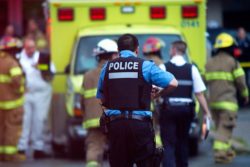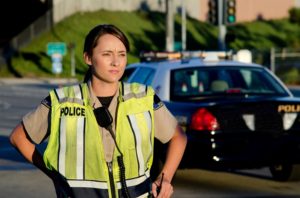Naloxone and First Responders: Winning the Battle Against Overdose

For many years, naloxone, also known as Narcan or Evzio, was a somewhat obscure product, found mainly in emergency rooms and the occasional drug outreach center. Today, naloxone is on the front line of America’s war on drugs. Many states have passed legislation allowing individuals to obtain naloxone without a prescription, and an easy-to-use nasal spray version of the drug has been recently approved by the FDA.
In addition to these important measures, an increasing number of first responders are now equipped with this life-saving drug whenever they’re on duty. In this article, we’ll look at how naloxone is helping first responders prevent fatal overdoses.
How Naloxone Works
Naloxone is sometimes described as a “save shot” because of its fast-acting ability to rescue someone from an overdose.1 When a person uses an opioid drug, the drug attaches to opioid receptors in the brain. The usual effects of opioids include pain relief and feelings of euphoria; however, an opioid overdose can also suppress a person’s breathing to dangerous or even fatal levels.
Naloxone works by temporarily displacing opioids from the brain’s opioid receptors, allowing the person to begin breathing normally again and buying time to seek medical attention. Administered correctly, naloxone begins working in minutes. The drug is not addictive and will have no effect on a person with no opioids in their system.
The Opioid Epidemic in America
Opioid addiction is a national public health crisis, and it’s claiming thousands of lives each year. In 2015, over 20,000 overdose deaths were related to prescription painkillers, and nearly 13,000 fatalities involved heroin.2 The opioid epidemic has affected Americans of every age, race, and socioeconomic class, destroying countless lives over the past decade.
Arming First Responders
In an attempt to reduce the number of overdose fatalities, more and more cities are providing first responders with naloxone. The city of Bridgeport, Connecticut elected to increase the supply of naloxone they distributed to city firefighters, due to a 400 percent jump in the number of opioid-related overdoses from 2015 to 2016.1 The Bridgeport fire chief estimates that the city’s first responders treat overdoses with naloxone twice a day, on average.
 Some states, such as Massachusetts, now allow first responders to carry stronger doses of naloxone. This change is in response to a surge in overdose cases involving fentanyl, a potent opioid that resists the standard dosage of naloxone.
Some states, such as Massachusetts, now allow first responders to carry stronger doses of naloxone. This change is in response to a surge in overdose cases involving fentanyl, a potent opioid that resists the standard dosage of naloxone.
Naloxone is helping police officers, paramedics and firefighters win the battle against overdose. While naloxone won’t solve America’s drug crisis on its own, it has the ability to prevent deaths and give people a chance to get the help they need. With naloxone and other important addiction treatment measures, the United States can make a difference, one life at a time.


